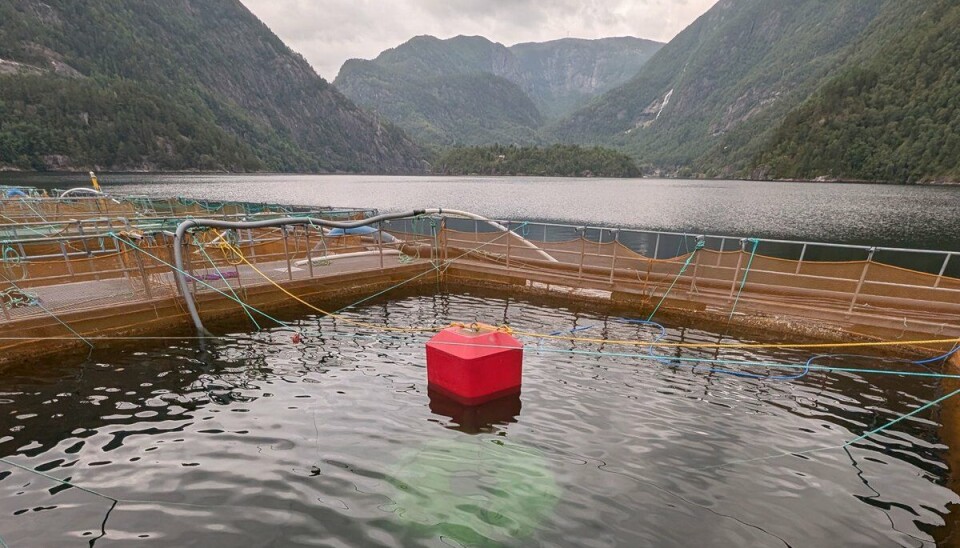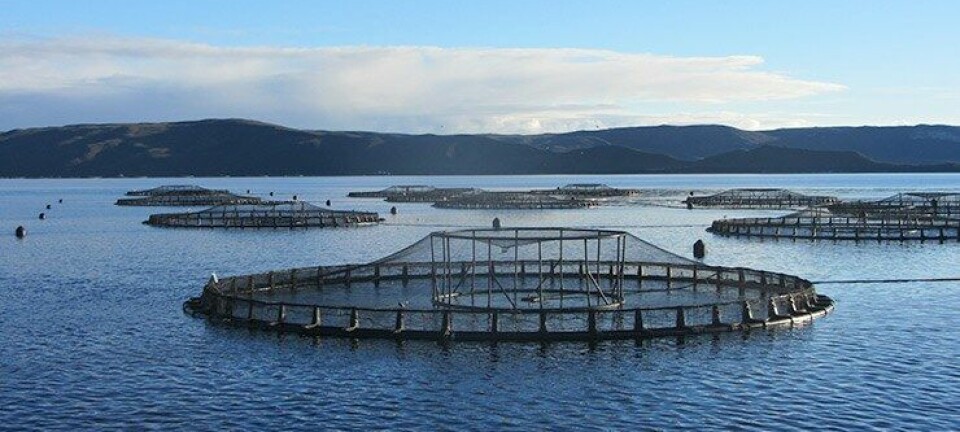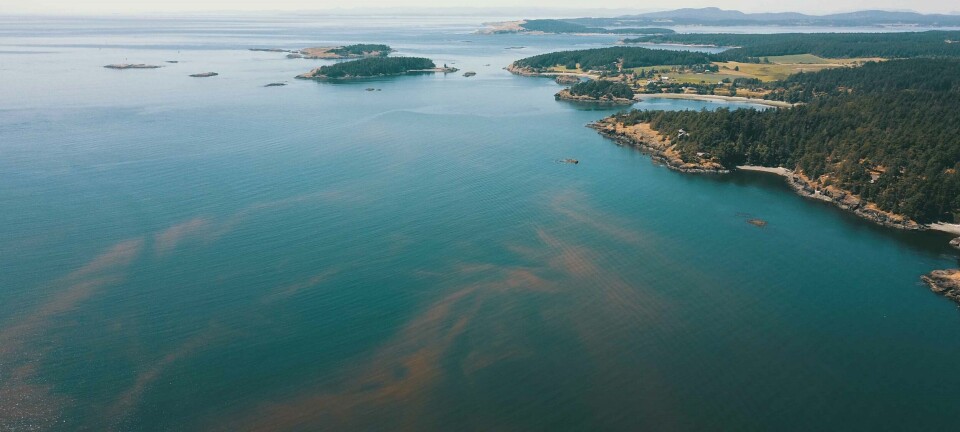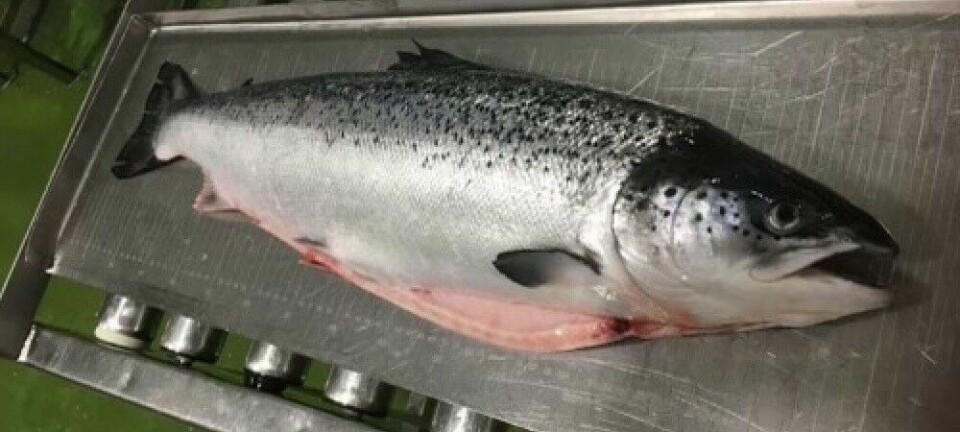
The environment determines if submersible pens are beneficial
Keeping fish at depth can prevent lice infestations but farmers must be aware of potential negatives, too
Researchers who have looked at growth and behaviour in fish in a submersible cage and compared it with fish in a regular cage have found interesting results, Norway's Institute of Marine Research (IMR) writes on its website.
"We clearly see that it is very important that the environment in the depths is suitable for the fish. Otherwise, fish farmers risk the fish having problems with welfare and diseases to the same extent as in surface facilities," says marine researcher Frode Oppedal.
Poorer growth
The recently conducted experiment started after relatively disappointing results where researchers were to compare fish held at the surface with fish in a submerged cage.
"Although the lice infestation was greatly reduced, the fish in the submerged cage had poorer growth and were attacked by the bacteria that cause winter ulcers. Meanwhile, the fish in the surface facility did just fine, they also did not get as many winter ulcers," says Oppedal.
This led the researchers to suspect that local conditions might vary more than they had initially thought, or alternatively, that submerged cages had a negative effect on the fish.
"We began to look at what was the difference between the two fish groups. One was obviously that one cage was submerged, but we knew from previous experiments that this should not have such a significant impact. Thus, we were left with only the environment being different," he says.
Previously, researchers knew that the environment in Masfjorden, where the experiment was conducted, could vary greatly. In fjords, there are layers of freshwater and brackish water on the surface. How deep these layers go varies. In addition, there is also a great variation in oxygen levels and temperature down the depths.
New experiment, new result
"We decided to conduct a new experiment to find out whether it was the submerged cages themselves or the environmental difference that was the reason why the fish groups developed differently," says the researcher.
The solution was to place fish in a total of six cages; three cages that were submerged and three control cages. The cages were placed two by two next to each other - this ensured the same environment for both fish groups. One was a regular cage where the fish have full access to the surface. The other was submerged to a depth of 1 metre, where the fish only had access to air through an air dome.
"If the theory that it was the environment that negatively affected the fish in the first experiment was correct, the fish in these two groups should develop identically," says Oppedal.

Same growth
The experiment lasted 11 months so that the scientists could follow a complete production from smolt release to market-ready fish.
"The results showed no difference between the two groups in terms of growth, welfare, and behaviour," says Oppedal.
Therefore, the suspicion that different environments down the water column affect the submersible cages was confirmed.
"It is clear that the environment in the depths is very important for the fish. Even if the surface environment is good, it can be completely different deeper down," he says.
To determine if the environment in the depths is suitable, continuous measurements must be taken. It is also possible to use models to find out if it is suitable for aquaculture fish.
"We have already developed an app that farmers can use to examine which measures against salmon lice are best suited for the different localities. Going forward, we will also add the ability to model whether a locality is suitable for submersible cages," says Oppedal.
Differences in the deep
Initially, assuming the locality is found suitable in terms of technical requirements, depth, and water flow, temperature and oxygen levels are the two most important factors that determine whether farmed salmon thrive at a locality. Additionally, there are also differences in where various parasites reside within the water column.
An example of this is amoebas that can cause AGD (amoebic gill disease) and the bacteria that cause winter ulcers.
"These do not thrive in brackish water, thus farmed fish on the surface in a fjord with a brackish water layer have a natural protection or treatment against them," says Oppedal.
At the same time, this can give farmed fish in submerged facilities a corresponding disadvantage, which might be solved if the farmer is aware of the issue and incorporates it into the operation.
"If one sees that these bacteria develop in the depths so that they can become a challenge in a submersible cage, the farmer can take this into account and consider measures," he says.
Freshwater treatment
A solution is that the fish can mostly be kept at the depths, but the cage can be raised so that the fish occasionally come up into the brackish water layer. This must then be balanced against the increased infection pressure of sea lice larvae closer to the surface, and treatment with freshwater in a wellboat may therefore be a better solution.
"Since amoebas cannot tolerate freshwater, they die when the fish are lifted. After the 'treatment' the fish can be lowered again," says Oppedal.
Winter sore bacteria probably require a longer time in fresh-/ brackish water before healing can be achieved.
Reduced delousings
The salmon louse (Lepeophtheirus salmonis) is a well-known parasite in the aquaculture industry, and one of the reasons why submersible cages are being tested. Several farmers have now completed entire productions where delousing has been avoided. But not everyone avoids delousings even if they implement this measure.
"Even if some with submerged cages must delouse, they still have fewer delousings than before. Modern mechanical or thermal delousing is one of the reasons for high mortality in farmed fish, so a reduction in the number of delousings is anyway positive," he says.
Varying the depth
Since environmental conditions vary so much, researchers will look into whether it might be better to adjust the depth at which the fish are kept as the environment changes throughout the seasons.
"Here we are just at the beginning of a new project. We want to see if it might be better for the fish if the cage is moved up and down in the water column depending on how oxygen, temperature, and other factors affect it at any given time," says Oppedal.
The lice pressure and the development time of the lice are also dependent on the temperature. Thus, variation between different depths at different seasons might also be beneficial for reducing lice on farmed fish.
The work is done in collaboration with Deakin University in Melbourne as part of the innovation project Dypdom funded by the Research Council and the corporate partners Sinkaberg and AKVA.



































































